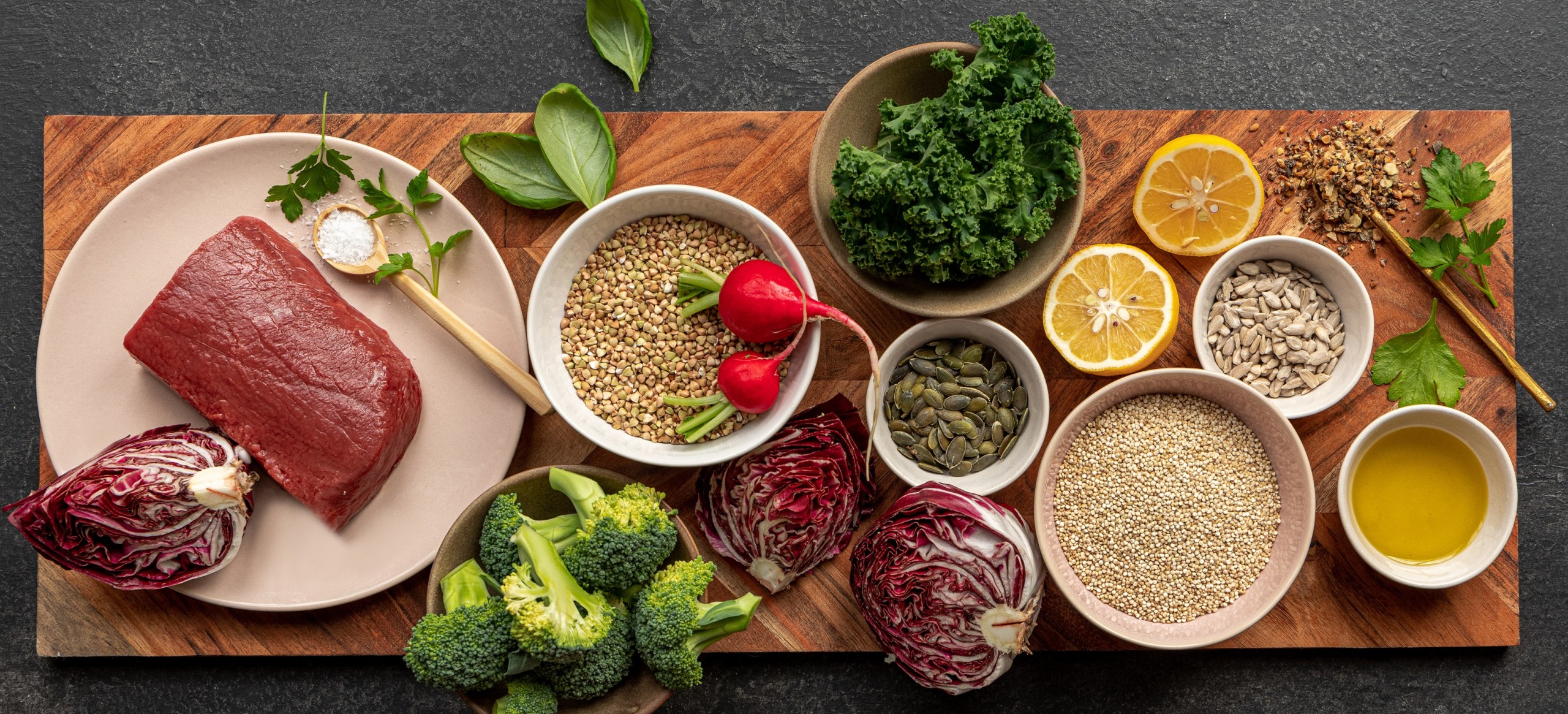OVERVIEW
For optimal health, nutritionists generally recommend a diet that includes the intake of moderate amounts of lean meat.
New Zealand Venison is a nutritional powerhouse. It is high in protein and low in fat and calories. No steroids, no hormones, less fat than beef, lower fat, calories and cholesterol than skinless chicken, and high in protein.
It truly is the healthy choice.
Rich in iron
Venison is an excellent natural source of iron, particularly in its heme form, which the body absorbs efficiently. Iron plays a vital role in oxygen transport, energy production, and cognitive function. Because venison is lean and nutrient-dense, it delivers iron without excessive fat or calories.
Low in total, saturated fat
Lean venison is naturally low in total fat and saturated fat, making it a heart-healthy red meat option. Unlike many conventional meats, it’s rich in high-quality protein while containing minimal intramuscular fat. Lower saturated fat intake is linked to better cardiovascular health, and venison offers a nutrient-dense way to enjoy red meat without excess calories.
High in quality protein
Venison is an excellent source of high-quality protein, making it ideal for supporting muscle growth, repair, and overall health. A 100 g serving typically delivers around 25–30 g of protein, with all nine essential amino acids your body needs. This makes it a complete protein source.
High in zinc
Venison is a rich natural source of zinc, an essential trace mineral that supports immune health, wound healing, and cell growth. A 100 g serving provides a generous amount of highly bioavailable zinc, making it more easily absorbed than plant-based sources. Zinc also plays a key role in hormone regulation, metabolism, and maintaining healthy skin.
Good source of B vitamins
Venison is packed with B vitamins, especially B12, riboflavin (B2) and niacin (B3), which are essential for energy production, brain function, and red blood cell formation. These vitamins help convert food into fuel, support a healthy nervous system, and reduce fatigue.
Higher omega-3 levels
Grass-fed venison offers a naturally healthier fat profile, including beneficial omega-3 fatty acids. These essential fats support heart health, reduce inflammation, and play a role in brain function. Unlike grain-fed meats, grass-fed venison typically contains higher omega-3 levels and a better omega-6 to omega-3 balance.
An 100g portion of venison provides:
40% RDI iron, 35% zinc, and 67% B12
55% of daily protein needs
less than 1 gram of saturated fat
150 calories
The key nutrients provided by 100g of cooked venison*
| Nutrient Content | Quantity per 100g | % Daily intake (RDI) per 100g | Nutritional description |
|---|---|---|---|
| Energy | 537kJ | 6 | |
| Protein | 28g | 55 | Good source |
| Fat, total | 1.8g | 3 | Low fat |
| Fat, saturated (SFA) | 0.8g | 3 | Low in saturated fatty acids |
| Trans fatty acids | 0g | Trans fatty acids free | |
| Sodium | 32mg | 1 | Low salt or sodium |
| Riboflavin (vitamin B2) | 0.6mg | 33 | Good source |
| Zinc | 4.2mg | 35 | Good source |
| Selenium | 18μg | 25 | Good source |
| Niacin (vitamin B3) | 8.3mg | 83 | Good source |
| Vitamin B12 | 1.3μg | 67 | Good source |
| Thiamin (vitamin B1) | 0.15mg | 14 | Source |
| Vitamin B6 | 0.3mg | 17 | Source |
| Phosphorus | 200mg | 20 | Source |
*Based on 100g of cooked venison medallion. New Zealand Food Composition Database 2018
Nutritional Comparison of Common Proteins*
| Nutrient Content | Venison Medallion | Chicken breast (no skin) | Pork medallion | Beef scotch fillet | Lamb loin |
|---|---|---|---|---|---|
| Energy (kJ) | 537 | 620 | 770 | 1000 | 653 |
| Protein (g) | 28 | 25 | 32 | 30 | 28 |
| Fat, total (g) | 1.8 | 5.2 | 5.9 | 13.2 | 4.8 |
| Fat, saturated (SFA) (g) | 0.8 | 1.7 | 2.5 | 4.6 | 1.8 |
| Cholesterol (mg) | 72 | 77 | 109 | 94 | 94 |
| Iron (mg) | 4.8 | 0.7 | 1.9 | 2.4 | 2.2 |
| Selenium (μg) | 17.7 | 13.7 | 16.8 | 6.6 | 6.5 |
| Zinc (μg) | 4.2 | 1.2 | 3.6 | 5 | 2.8 |

